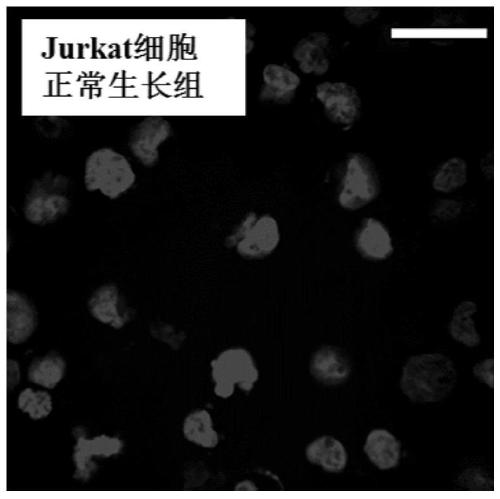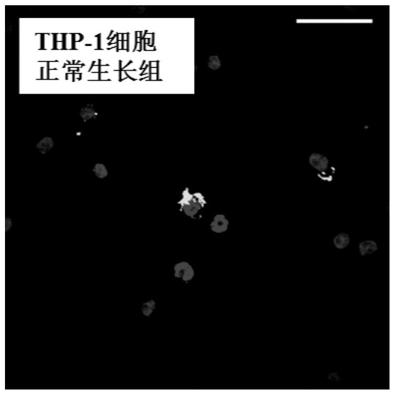A kind of polypeptide used for in vivo and in vitro apoptosis imaging probe and its application
An imaging probe and imaging technology, applied in the field of biomedicine, can solve the problems of radioactive pollution, high synthesis cost, unfavorable scientific research and clinical promotion, etc., and achieve the effect of easy removal and significant binding ability
- Summary
- Abstract
- Description
- Claims
- Application Information
AI Technical Summary
Problems solved by technology
Method used
Image
Examples
Embodiment 1
[0048] Embodiment 1: the synthesis of P17 polypeptide
[0049] The P17 polypeptide (synthesized by Shanghai Keyept Biotechnology Co., Ltd., with a purity of 98%) was synthesized according to the following sequence, and a mother solution with a suitable concentration was prepared before the experiment.
[0050] GDQNLQGPMLQGDPGFQRCIDGNVRLVFLFRG
Embodiment 2
[0051] Example 2: Apoptosis imaging of P17 polypeptide probe on Jurkat cell model
[0052] Add 10 ng / mL TRAIL (TNF-related apoptosis-inducing ligand) protein to the normally growing Jurkat cell culture system, and incubate at 37°C for 24 hours to induce cell apoptosis. Add 10M fluorescein isothiocyanate (FITC)-labeled P17 polypeptide (FITC-P17) to the normal growth group and the induced apoptosis group respectively, and incubate at 37°C for 2h. Cells were washed with phosphate buffered saline (PBS) to remove unbound P17 polypeptide, and nuclei were stained with the nuclear dye 4',6-diamidino-2-phenylindole (DAPI).
[0053] Observation with laser confocal microscope, such as Figures 1A-1B As shown, under the excitation of 488nm, the green fluorescence of P17 can be seen; under the excitation of 405nm, the blue fluorescence of the cell nucleus can be seen. It shows that the P17 polypeptide has a significant binding ability to the cells after induction of apoptosis, but very li...
Embodiment 3
[0054] Example 3: Apoptosis imaging of P17 polypeptide probe on THP-1 cell model
[0055] Add 100ng / mL TRAIL protein to the normal growing THP-1 cell culture system and incubate at 37°C for 24h to induce cell apoptosis. Add 10M fluorescein isothiocyanate (FITC)-labeled P17 polypeptide (FITC-P17) to the normal growth group and the induced apoptosis group respectively, and incubate at 37°C for 2h. Cells were washed with PBS to remove unbound P17, after which nuclei were stained with DAPI.
[0056] Observation with laser confocal microscope, such as Figure 1C-1D As shown, under the excitation of 488nm, the green fluorescence of P17 can be seen; under the excitation of 405nm, the blue fluorescence of the cell nucleus can be seen. It shows that the P17 polypeptide has a significant binding ability to the cells after induction of apoptosis, but very little binding to the cells of normal growth.
PUM
 Login to View More
Login to View More Abstract
Description
Claims
Application Information
 Login to View More
Login to View More - R&D Engineer
- R&D Manager
- IP Professional
- Industry Leading Data Capabilities
- Powerful AI technology
- Patent DNA Extraction
Browse by: Latest US Patents, China's latest patents, Technical Efficacy Thesaurus, Application Domain, Technology Topic, Popular Technical Reports.
© 2024 PatSnap. All rights reserved.Legal|Privacy policy|Modern Slavery Act Transparency Statement|Sitemap|About US| Contact US: help@patsnap.com










